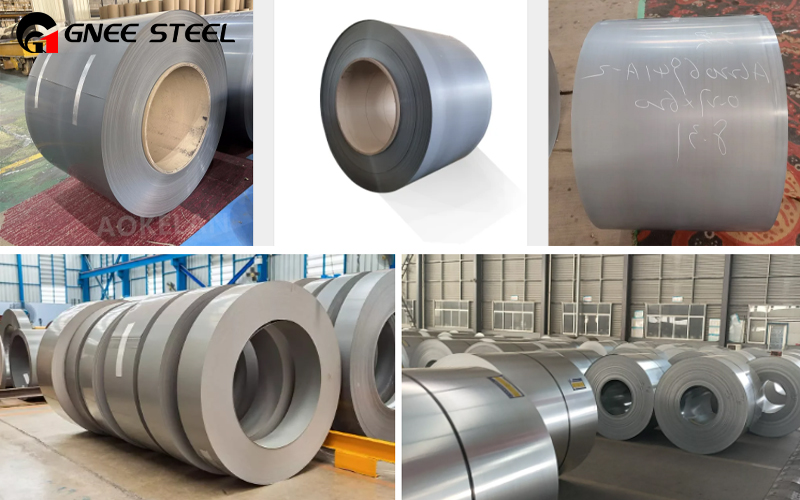GNEE oriented silicon steel suppiler
In this comprehensive guide, we will delve into the intricacies of grain oriented electrical steel prices, shedding light on the factors influencing them, frequently asked questions, and ultimately providing you with a clear understanding of the current market scenario.
Grain oriented electrical steel price is a significant consideration for manufacturers, suppliers, and end-users. Understanding the pricing dynamics allows industry stakeholders to make informed decisions regarding production, procurement, and investment. By closely monitoring the grain oriented electrical steel price trends, businesses can optimize their operations, ensure cost-effectiveness, and maximize profitability. Let's explore the key factors that impact the pricing of grain oriented electrical steel.
The fundamental principle of supply and demand plays a crucial role in determining the grain oriented electrical steel price. When demand outpaces supply, prices tend to rise, reflecting the scarcity of the material. Conversely, when supply exceeds demand, prices may decrease as producers seek to offload excess inventory. Various market factors, such as industrial growth, infrastructure projects, and energy sector developments, influence the supply and demand dynamics of grain oriented electrical steel.
The cost of raw materials is another essential factor affecting the price of grain oriented electrical steel. The production process involves multiple components, including iron ore, silicon, and other alloys. Fluctuations in the prices of these raw materials directly impact the overall cost of production, subsequently influencing the final price of grain oriented electrical steel. Additionally, energy costs, transportation expenses, and labor wages contribute to the total cost structure.
Competition among grain oriented electrical steel manufacturers and suppliers can drive price fluctuations. When several companies vie for market share, they may engage in pricing strategies to attract customers and gain a competitive edge. Intense competition often leads to price volatility, with manufacturers offering competitive prices, discounts, or other incentives to secure contracts. Monitoring the competitive landscape is crucial to understanding the prevailing grain oriented electrical steel price.
silicon steel coil

To gain a comprehensive understanding of the grain oriented electrical steel price, it is essential to examine the factors that influence its fluctuations. Here are some key determinants to consider:
The overall economic conditions of a region or country significantly impact the grain oriented electrical steel price. Economic growth, inflation rates, currency fluctuations, and interest rates all play a part in shaping market dynamics. During periods of economic expansion, the demand for grain oriented electrical steel tends to rise, potentially leading to price increases. Conversely, economic downturns may result in reduced demand and downward price pressure.
Trade policies and tariffs imposed by governments can affect the grain oriented electrical steel price. Trade disputes, import duties, and export regulations can disrupt the supply chain, leading to price fluctuations. Changes in trade policies can result in higher costs, impacting the final price of grain oriented electrical steel.
Technological advancements in manufacturing processes can impact grain oriented electrical steel prices. Innovations that improve production efficiency, enhance quality, or reduce waste can lead to cost savings for manufacturers. These cost savings may be passed on to customers, resulting in more competitive prices for grain oriented electrical steel.
Keeping an eye on global market trends is crucial in understanding the grain oriented electrical steel price. Factors such as international demand, geopolitical events, and global economic shifts can impact prices. For instance, an increase in infrastructure projects or renewable energy initiatives across multiple countries can drive up the demand for grain oriented electrical steel, potentially leading to higher prices.
Environmental regulations and sustainability initiatives also influence the grain oriented electrical steel price. As the world moves towards a greener and more sustainable future, manufacturers may incur additional costs to comply with stringent environmental standards. These costs can impact the overall production expenses and, consequently, the final price of grain oriented electrical steel.
Exchange rate fluctuations can significantly impact the grain oriented electrical steel price in international markets. When a country's currency strengthens against other currencies, it may result in higher import costs for grain oriented electrical steel. Conversely, a weaker currency can make imports more affordable, potentially leading to lower prices.
Keep in mind that the grain oriented electrical steel price is subject to various market forces and can change rapidly. Understanding the grain oriented electrical steel price is crucial for industry professionals and stakeholders to make informed decisions for one can navigate the complexities of the market effectively. GNEE is a professional silicon steel manufacturer in China, and we offer various silicon steel at the best grain oriented electrical steel price! Please feel free to contact us for more details!